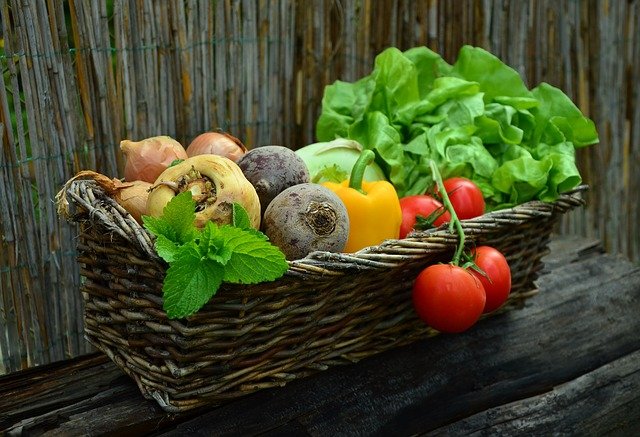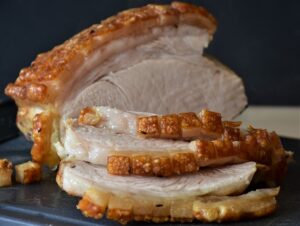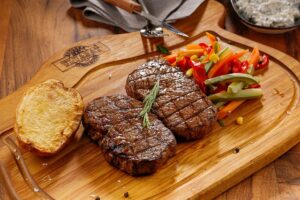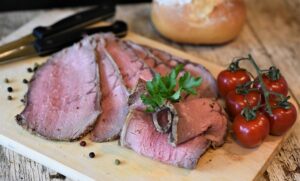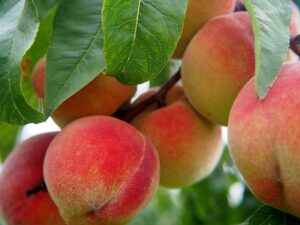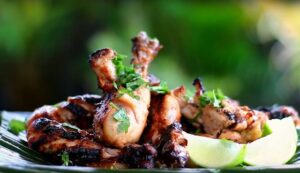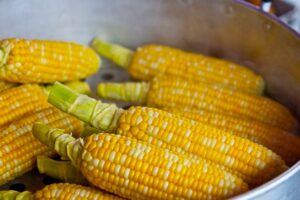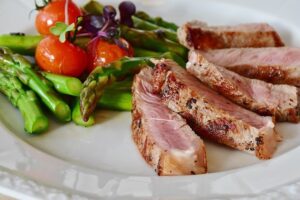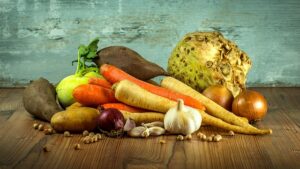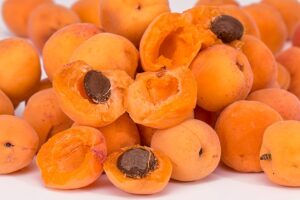Category: Food
1. What is the best way to limit the growth of bacteria in food?
The best way to limit bacteria in food is to cook the food to 165 degrees or better. This kills off harmful bacteria making the food safe to eat. If there is 11 answers · Top answer: Food tends to spoil a lot quicker after it has been reaped.
Goats can live up to 18 years. (1)…
Pathogen growth is controlled by a time-temperature relationship. To kill micro-organisms, food must be held at a sufficient temperature for a sufficient time.(2)…
Mar 21, 2019 — The best way to limit the growth of bacteria in food is to NOT leave the food for too long in the Danger Zone.2 answers · 8 votes: Warmth – the ‘danger zone’ temperatures at which bacteria grow best are between 5ºC and (3)…
2. 13. What is the best way to limit the growth of bacteria in food …
May 20, 2020 — The most appropriate to limit bacteria growth is temperature and time. The essential way is to keep the food either hot or cold. Some bacteria (4)…
Sep 28, 2019 — The best way to avoid bacterial growth on food is to follow proper food-handling instructions: Keep meat cold, wash your hands and any (5)…
Nov 25, 2020 — Cleanliness is essential to note to limit the growth of bacteria in food. You have to wash your hands before after and after meal preparations (6)…
3. Kitchen Germs: How to Avoid Bacteria When Cooking – WebMD
After: it’s contaminated post-preparation and/or during storage. The good news is there are lots of ways you can prevent bacteria from growing on your food, (7)…
It is essential to keep work surfaces and fridges clean to prevent the spread of bacteria. You should also wash and dry your hands carefully to avoid (8)…
4. 10 ways to prevent food poisoning – – – Eat well – NHS
This is to avoid contaminating ready-to-eat foods with harmful bacteria that can be present in raw food before it has been cooked. Keep raw meat separate. It’s (9)…
If you consider the severity and damage due to food poisoning, limiting the bacterial growth in food is the best option available out there. How to prevent the (10)…
Freezing meat is a very good way to slow or stop microbial growth and thereby shelf life and ensuring food safety, there are only very limited cases of (11)…
The most important way to prevent bacteria from causing a foodborne What type of food support the growth of bacteria better than other types of food. Rating: 3.8 · 4 reviews(12)…
Bacteria can cause food spoilage by breaking down the food, producing acids or which reduces water activity sufficiently to prevent bacterial growth.(13)…
5. Conditions needed for bacterial growth – Food safety – CCEA
It is important to store, prepare and cook foods safely in order to reduce the risk of bacteria multiplying and causing foodborne illness. Bacteria need the (14)…
Low temperature limits growth of food poisoning and food spoilage Most bacteria grow best at about pH 7 and grow poorly or not at all below pH 4.(15)…
Jan 4, 2011 — Proper cooking kills bacteria in food and chilling foods slows the growth of bacteria. Both methods decrease the risk of foodborne illness.(16)…
6. Prevent Cross-Contamination – Food Safety – Minnesota …
Place these foods in plastic bags to prevent their juices from dripping onto Because bacteria can grow well on the cut surface of fruit or vegetables, (17)…
by I Ferrocino · 2013 · Cited by 36 — A nisin-EDTA solution was used for activation of the internal surface of Antimicrobial packaging to retard the growth of spoilage bacteria and to reduce (18)…
While temperature, pH, and other factors can influence the presence of microbial growth in a food product, water activity may be the most important factor.(19)…
Feb 21, 2006 — Most disease-causing bacteria do not grow below 0.94 aw (roughly 10 percent sodium chloride concentration), whereas most molds that spoil foods (20)…
7. In the Kitchen: Prevent the Spread of Infection – URMC
Hand-to-hand or hand-to-food contact. Most viruses and bacteria that cause colds, flu, and foodborne illnesses are spread this way. People with hepatitis A, (21)…
There are some simple rules to prevent or limit these bacteria from Therefore, although storing foods in the refrigerator is the best way to keep them (22)…
Dec 24, 2015 — What can I do to reduce the risk of food poisoning? How do I properly store, However, bacteria grow better in some foods than others.(23)…
8. Antibiotic Resistance, Food, and Food Animals | Food Safety
Antibiotics are medicines that kill or stop the growth of bacteria. One way people can get intestinal (gut) infections is from food.(24)…
2016 · Cited by 8 — Abstract Pseudomonads and lactic acid bacteria (LAB) are the most the recommendations for maximum surface temperature and maximum (25)…
Jul 20, 2020 — The solution to growing despite limits on cell size is for cells to divide or Overall, microbes typically grow best at a specific set of (26)…
9. How to better control undesirable microbes in the food industry
Many different methods exist to detect spores of different types of sporeformers, as not all spores behave the same. Different growth media may be used and (27)…
Although refrigeration is a good way of slowing down food spoilage, it cannot stop the growth of these bacteria. Mesophiles. Microbes that grow at optimal (28)…
10. bacteria – Physical requirements | Britannica
Bacteria that require oxygen to grow are called obligate aerobic bacteria. anaerobes because they grow better in low concentrations of oxygen.(29)…
Feb 21, 2017 — Bacteria grow most rapidly between 40 °F and 140 °F. To limit bacterial growth, keep hot food on the grill and place cold food in a cooler (30)…
examines the question of how we detect and quantify bacteria in food. We Methods. Homeostasis and Hurdle Technology. Growth Kinetics.(31)…
Bacteria grow best when intrinsic and extrinsic properties are optimal for their To prevent food poisoning, raw meat should be cooked thoroughly before (32)…
You have the power to fight bacteria and reduce your risk of foodborne illness. Never place cooked food on a plate that previously held raw meat, (33)…
by D Yang · 2018 · Cited by 42 — High resolution optical microscopy is the most widespread method to study bacterial cellular organization and physiology at the single cell (34)…
Facultative anaerobes can grow slowly within oxygen but grow better in its presence. Food-poisoning bacteria are anaerobes and facultative anaerobes. The most (35)…
by X Shao · 2017 · Cited by 17 — Surprisingly, the maximum density of bacteria growing as colonies is when all the cells in the colony run out of food at the same time.(36)…
Bacteria need time to grow, and they double in number every 20 minutes. Proper hand washing is the best way to prevent outbreaks of both hepatitis A and (37)…
Bacteria that cause food poisoning grow at temperatures between 45 which method or combination of methods is most effective for a particular food.(38)…
Excerpt Links
(1). What is the best way to limit the growth of bacteria in food?
(2). Preventing Foodborne Illness – Food Safety, Sanitation
(3). What is the best way to limit the growth of bacteria in food
(4). 13. What is the best way to limit the growth of bacteria in food …
(5). Does Refrigeration Prevent Bacterial Growth in Food? – The …
(6). What Is The Best Way To Limit The Growth Of … – Littlelioness
(7). Kitchen Germs: How to Avoid Bacteria When Cooking – WebMD
(8). Preventing the spread of germs | nidirect
(9). 10 ways to prevent food poisoning – – – Eat well – NHS
(10). What Is The Best Way To Limit The Growth Of Bacteria In Food?
(11). Microbial Growth – an overview | ScienceDirect Topics
(12). Servsafe Ch2 Flashcards | Quizlet
(13). Food Preservation | Boundless Microbiology – Lumen …
(14). Conditions needed for bacterial growth – Food safety – CCEA
(15). Introduction to the Microbiology of Food – Aggie Horticulture
(16). Food Safety A to Z Reference Guide
(17). Prevent Cross-Contamination – Food Safety – Minnesota …
(18). Antimicrobial packaging to retard the growth of spoilage …
(19). Water activity controls microbial growth – METER Group
(20). How do salt and sugar prevent microbial spoilage? – Scientific …
(21). In the Kitchen: Prevent the Spread of Infection – URMC
(22). Microorganisms able to grow or survive at cold temperatures
(23). high-risk foods – Food Safety – Public Health – MOHLTC
(24). Antibiotic Resistance, Food, and Food Animals | Food Safety
(25). Growth of spoilage bacteria during storage and transport of meat
(26). How Microbes Grow – Science in the News (Harvard University)
(27). How to better control undesirable microbes in the food industry
(28). Effect of Temperature on Growth Rate H – Properties of Microbes
(29). bacteria – Physical requirements | Britannica
(30). Keeping Bacteria at Bay on Your Grilling Day | USDA
(31). Factors That Influence Microbes in Foods*
(32). Bacteria in Raw Meat vs Cooked Meat – Centre for Food Safety
(33). The Core Four Practices of Food Safety | FightBAC
(34). Analysis of Factors Limiting Bacterial Growth in PDMS Mother …
(35). General hygiene principles for meat handling
(36). Growth of bacteria in 3-d colonies – PLOS
(37). Food Hazards — Learn How to Avoid Them and the …
(38). Cooling and Reheating of Potentially Hazardous Foods

